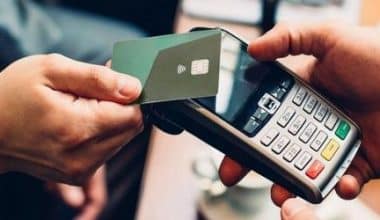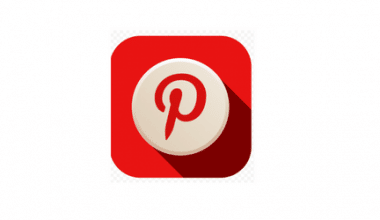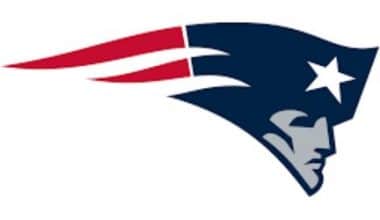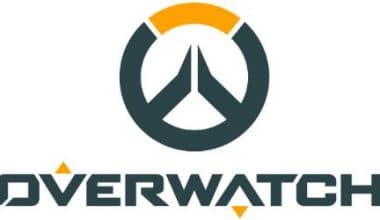For every brand strategy planned and implemented appropriately, there is a high tendency of it experiencing a skyrocketed growth level in all ramifications. Similarly, for every successful brand, there lie stories and lessons that follow afterward. The same applies to the Coca-Cola brand.
The Coca-Cola brand story remains invariably a big bang theory that rings through the heights and depths of the vast world of business.
The Journey So Far:
The Coca-Cola Company was established in 1886, when Dr. John S. Pemberton, a pharmacist in Atlanta, got the idea to experiment with a soft drink that’s refreshing and could be sold out. The idea birthed the excellent Coca-Cola drink and was well commended by everyone who tasted it.
However, the pharmacist, Dr. Pemberton struggled to attain success because he had no marketing plan suitable for the drink. Fortunately, Dr. Pemberton’s bookkeeper, Frank M. Robinson, became very resourceful at that time. He gave the name “Coca-Cola” and designed the initial brand logo, which has been modified over time. After a while, a man, Asa G. Candler, took Coca-Cola out of Atlanta for the time being. This led to the astonishing feat the brand later attained globally.
One marketing effort embraced by the Coca-Cola brand is based on offering customers satisfaction, which stems from creating sustainability of their strategic growth admired by all and sundry.
Coca-Cola Company is undoubtedly one of the best distribution networks in the world, as long as the beverage industry is concerned. Its market focus and growth strategy cannot be overemphasized. Owning to the fact that there are other beverage brands in the industry, the Coca-Cola brand remains top-notch and has since recorded tremendous successes in its market position.
Attributes That Sustained Coca-Cola Growth:
Brand success can be an easy task compared to its ability to sustain the success story. It all boils down to knowing the nitty-gritty of the strategic growth and sustainability of the brand’s growth.
So, what has helped sustain the growth of an iconic brand like the Coca-Cola brand?
#1. Vision:
The Coca-Cola Company’s vision statement is a strong influence on the company’s needs towards achieving the sustainability of a qualitative growth scheme. Its vision is, however, centered on fundamental growth factors. They include:
- People
- Partners
- Portfolio
- Profit
- Planet
- Productivity
For over 130 years, the brand never ceases to dish out fresh, exciting, noteworthy, and unique marketing campaigns. Coca-Cola’s brand identity has also gained firm market position in the hearts and minds of customers at all levels from generation to generation.
#2. Wariness of Changes:
Change, as we know is universally constant. Marketers and brand owners in general, seem to shy away from big changes that are likely to occur. The fear of these changes resulting in a diminishing return is inevitable. The decisions made during such changes can either make or mar the brand and as such, it is paramount to be wary of changes.
With the excellent success recorded by the Coca-Cola brand so far, it might be a shocker alert to know that there have been mistakes made in the past which at some points affected the company’s growth. In its bid to satisfactorily meet the needs of customers, the company faced a terrible shift in branding and drink flavor compared to its counterparts.
Therefore, it is advisable to cogitate seriously when it comes to rebranding or restructuring. This is one factor Coca-Cola subscribed to, which of course has helped sustain its growth.
#3. Maximizing the Brand’s Power:
The growth of the Coca-Cola company has stood over the years because of the maximization of its brand’s power. They’ve been able to focus on building a brand, rather than its products.
Most brands in the business world today, are still very shaky and are on the verge of collapsing because they have the “my product, my pride” mentality. One secret is, that your product or service is zero without a powerful brand. The Coca-Cola company has been able to sell their brand, their idea, and experience, rather than their product.
#4. Consistency:
You will strongly agree that the Coca-Cola company is one that remains consistent in all areas. Regardless of the umpteen customers, they’ve attracted, they never cease to create awareness and come up with new and captivating marketing campaigns to attract both old and new target audiences. With the introduction of a new brand logo and product package, they still maintain their vision of refreshment to life, as well as putting smiles on the faces of all who have a taste.
#5. Value:
What has helped sustain Coca-Cola’s growth, is its ability to stand firm on its values as a brand. Since conception, it stands on positive ideas and a determination to achieve the brilliant desired result. The Coca-Cola brand remains timeless.
Read More: How to sustain your business (4 step by step guide)
Advertising Strategies
Coca-Cola is arguably one of the most well-known brands in the world. That wasn’t always the case, though. When the company originally began in 1886, it employed free drink vouchers to generate interest in the product. Asa Candler, a marketer, completed the purchase of Coca-Cola from inventor Dr. John Pemberton in 1892. The original advertising budget for Candler was $11,000. Calendars, soda fountain urns, painted wall signs, napkins, pencils, and clocks were among the products he utilized to promote Coca-Cola. Coca-Cola states that the beverage is marketed and consumed in every state and territory in the United States by 1895, signaling the start of its global market saturation.
1900-1950s
Hilda Clark, a music hall entertainer, was the first celebrity to advertise Coca-Cola in 1900.
Joan Crawford, Ray Charles, The Supremes, Aretha Franklin, Arnold Palmer, and Joe Namath are just a few of the superstars who have endorsed the brand since then. The soft drink’s marketing expenditure had already grown tenfold to $100,000 by the turn of the century.
In 1904, Coca-Cola made its debut advertisement in a major magazine. The company’s advertising spending had risen to more than $1 million by 1911. Coca-Cola began using outdoor billboards and radio program sponsorships in its advertising in the 1920s. The renowned Coca-Cola Christmas advertising campaign debuted in 1931 with pictures of St. Nicholas drinking Coca-Cola.
1950s-1990s
In 1950, Coca-Cola’s first television commercial aired on Thanksgiving Day. Advertising has already accounted for a large number of the company’s expenses at this stage. McCann-Erickson, Inc. took over as the official advertising agency in 1956, replacing the D’Arcy Advertising Company. The latter had been advertising Coca-Cola for more than 50 years, signaling a shift in strategy. Outside of the United States, sales accounted for around 33% of total revenue.
The firm began to diversify its product ranges in the 1960s, acquiring The Minute Maid Corporation and launching Sprite in 1961. The iconic “I’d Like to Buy the World a Coke” television commercial was the first broadcast in 1971. It is still one of Coca-most Cola’s most popular and profitable commercials.
1990s-Present
“Northern Lights,” which debuted the Coca-Cola polar bears in 1993, is one of the most memorable Coca-Cola TV advertisements. However, not all of Coca-marketing Cola’s strategies have proven to be successful. To compete with Pepsi, the firm decided to update the Coke recipe for the first time in 99 years in 1985. “New Coke” was the name of the new beverage. In fact, the new flavor received such a poor response that Coca-Cola reverted to the original recipe in just 79 days.
Coca-Cola’s expenditure in 2011 was more than $4 billion, according to Joe Tripodi, the company’s chief marketing and commercial officer. Coca-Cola was voted Marketer of the Year by AdAge in 2011, proving that big investment pays results.
Coca-Cola Packaging Evolution
Until 1899, when Candler sold the U.S. bottling rights to Benjamin F. Thomas and Joseph B. Whitehead for $1.3 million, Coca-Cola was exclusively available as a fountain drink. In fact, in 1916, the Coca-Cola contour bottle was introduced. Coca-distinctive Cola’s bottle shape was created to set it apart from its competitors. Until 1955, when the king-sized box was launched, Coca-only Cola’s packaging was the 6.5-ounce contour bottle. In addition to the standard 6.5-ounce bottle, consumers could buy Coke in 10-, 12-, 16-, and 26-ounce bottles. Coca-Cola began using 12-ounce steel cans in 1960 to make their drinks more portable.
Therefore, Coca-Cola went green in 2009 with 100 percent recyclable bottles manufactured partly from plant-based materials, and it plans to reduce its usage of new plastic in North America by 20 percent by 2021.
6 Coca-seasonal Coca-Cola’s Christmas packaging was panned by consumers in 2011. For the first time, ordinary Coke was packaged in white cans that resembled the silver Diet Coke cans, according to customers. The white cans were meant to be available until February 2012, but they were replaced with the original red cans in December 2011. Coca-Cola said in October 2012 that it would discontinue producing 6.5-ounce glass bottles because they were no longer profitable.
History of the Coca-Cola Logo
Frank M. Robinson designed the iconic Coca-Cola script logo in 1886. In 1970, the Dynamic Ribbon Device, a red and white design representing two adjacent contour bottles, was introduced to the logo. In 2003, as part of the Coca-Cola Real campaign, a splash of yellow and floating bubbles was added to the white twist. Also, by 2007, the enhancements had been removed. Consequently, the firm produced a unique logo for their 125th anniversary that depicted bubbles pouring out of the contour bottle.
Conclusion
In 2020, Forbes rated Coca-Cola sixth on its list of the World’s Most Valuable Brands. Pepsi came in at No. 36, a long way behind. Coca-Cola has maintained its appeal and kept up with the times for more than a century while being rooted in nostalgia. Despite the competition, Coca-Cola is one of the world’s most popular and successful brands.
FAQs
What is the brand strategy of Coca-Cola?
Coca-Cola’s strategy is to utilize its brands, distribution system, and financial strength to achieve long-term sustainable growth. The company sees organic and sparkling beverage growth as key to its success and is pursuing primarily a strategy of bolt-on acquisitions in noncarbonated beverages.
What makes Coca-Cola a strong brand?
The Coke brand is powerful because it knows its customers make decisions based on how they feel about a company, rather than what that company can offer.
How does Coca-Cola influence customer behavior?
Along with the positive brand spirit expressed in its exposures, Coca-Cola delivers an active lifestyle and a perception of the good life which are accessible for customers. The perception is enhanced by its repeated exposures over and over again through its ads in different ads, media, and places.






